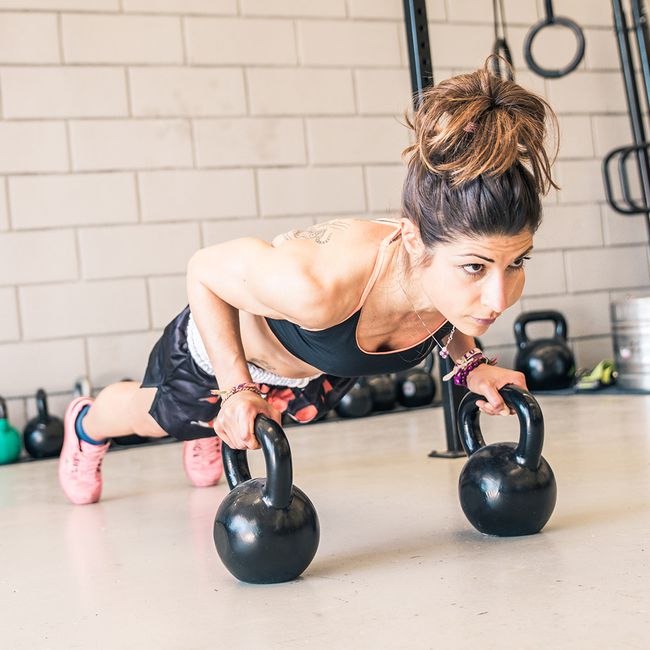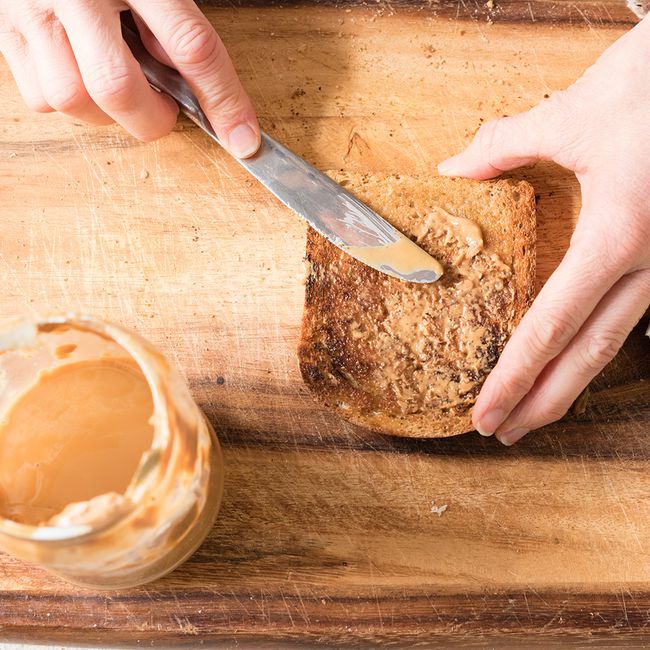
The latest science shows that a few small tweaks to your lifestyle can help you boost your burn and energize you for hours. Here's how to increase your metabolism the right way.
How to Increase Metabolism

You can't judge a metabolism by its cover. Two people could be the same height and weight, have the same BMI, and wear the same size, but have wildly different body compositions (aka the amount of muscle vs. fat in your body), making one the calorie-burning equivalent of a Bic lighter and the other of a blowtorch.
Metabolism, simply put, is the total number of calories your body burns each day. Sixty-five percent of those calories are used up for 24/7 functions like breathing and circulation—the top burners are your brain, liver, heart, and kidneys—with another 10 percent devoted to the process of digesting food. The remaining 25 percent of the calories you burn can be chalked up to the physical activity you do in a day—not just spin class, but every move you make, including standing in line or following a live-streamed yoga class.
News flash: It's not all genetic. Here's how to increase metabolism by making a few changes to your daily habits, from workouts you try to the food you eat.
Don't Be Intimidated by Strength Training

You’ve heard it before: The more muscle you have, the more calories you burn. In fact, lean tissues, including organs and muscles, on average burn 14 calories a pound a day, while fat only burns about three calories per pound, says David Heber, M.D., Ph.D., director of the UCLA Center for Human Nutrition.
The absolute amount of muscle in you determines the overall speed of your resting metabolism (the amount you burn just sitting around) and some of us are born with an edge in the amount of muscle fibers we’ve got. Angela Corcoran, director of education at the Cybex Research Institute, says to hit the gym and take advantage of free weights and strength training machines. They’re good for building lean muscle and will help increase your metabolism.
"They can also help to establish healthy fitness habits and consistency in an exercise program," Corcoran says. "Ask a trainer at your gym to explain how to use the programs on the equipment, and have them suggest a workout routine to help you."
Combine Strength and Cardio

Metabolism slows over time, but it doesn't do a sudden nosedive as you sit binging Game of Thrones. "Metabolism drops off 2 to 4 percent every decade as we tend to lose muscle mass," Dr. Heber explains. So, if as a twentysomething you burned 2,000 calories a day, fast-forward 10 years to your mid-thirties and you could be burning as few as 1,920 calories a day. Doesn't seem like a big difference until you do the math. Just 80 extra calories a day translates into eight pounds over a year, unless you pick up the slack with exercise.
“You can maintain your total energy expenditure as you age by combining strength training and aerobic activity. You’ll probably need to do more of both,” says Miriam Nelson, Ph.D., director of the John Hancock Research Center on Physical Activity, Nutrition, and Obesity Prevention at Tufts University in Boston. Nelson’s studies in the 1990s found that a twice-weekly regimen of eight to 12 resistance exercises increased women’s strength by 75 percent in one year, meaning they gained more metabolism-stoking muscle fibers. Most of those gains were in the first 12 weeks.
Even better, every workout is a potential answer to how to increase metabolism, not just during it but also afterward. One study found that a 50-minute weight routine delivered an additional afterburn of 14 calories. Between sets, add cardio bursts or shorten the rest, and that afterburn spikes—to the tune of 25 calories following a quickie 19-minute circuit session, according to the same study. (Use this perfectly balanced week of workouts to help program strength training into your routine.)
Try HIIT

“High-intensity interval training is a quick way to ramp up your body’s ability to use fat as a fuel,” explains Jason L. Talanian, Ph.D., assistant physiology professor at Fitchburg State University in Massachusetts. In a study Talanian conducted, women who did interval workouts on a stationary bike, similar to Spinning, burned 36 percent more fat when they switched back to a steady ride the following week. The speed bursts sparked a 20 percent increase in the amount of mitochondria in the exerciser’s muscle cells, making it easier for the women to metabolize fat for fuel rather than carbs. (And that’s just one of the benefits of HIIT.)
To net the afterburn uptick, "push your speed for 30 seconds when you walk or run, and then return to your usual pace for 30 seconds," says Jeff Peel, a trainer at 24 Hour Fitness in West Hollywood, California.
Power Up with Proteins Throughout the Day

"Turning protein from food into fuel in your body requires more energy than carbohydrates do." says Shape Brain Trust member Susan M. Kleiner, Ph.D., R.D.N. "a higher-protein diet leads to a higher calorie burn." Score!
Active women need about 1.6 grams of protein per kilogram of body weight—that’s more than 100 grams of protein daily, experts say. To ensure that your body utilizes the nutrient most efficiently, Amanda Carlson-Phillips, vice president of nutrition and research for Core Performance, recommends including a lean protein source in every meal.
"Eating five to six mini meals per day and including a lean protein source such as low-fat cheese, beans, chicken, fish, or peanut butter on every plate is a great way to rev your metabolism and keep you feeling energized and fueled all day long," she says.
Wondering how to increase metabolism with protein? “Studies show that people who eat a high-protein breakfast control their hunger longer and their weight better,” says Dr. Heber. Also, try to incorporate these healthy, high-protein foods essential for every diet into your weekly routine.
If You're Not Already, Become a Fan of Green Tea

Stay away from sodas, alcohol, and calorie-laden beverages. Not only will they leave you feeling bloated and fatigued, but they're the exact opposite of how to increase metabolism.
"Drinking brewed green tea is an effective way to get EGCG (epigallocatechin gallate), an ingredient known to speed up metabolism," Carlson-Phillips says. "Three cups of green tea a day can increase metabolism by up to 10 percent."
Get EGCG Other Ways

If you’ve tried to like green tea and it’s just not happening, there are other options. Gregg Schneider, D.D.S., a dentist and expert in alternative medicine, says an adequate amount of green tea to achieve really good results means consuming about six to 10 cups per day. Now that’s a lot of green tea!
Here's how to increase metabolism using EGCG without having to chug all that green tea: "It makes more sense to ingest a couple of green tea capsules per day," he says. "Look for supplements that contain at least 70 percent EGCG."
Drink, Drink, and Drink Some More

Water really does a body good, as will other healthy drinks. “Drink lots of fluids,” says Ariane Hundt, a New York City-based personal trainer and nutritionist. “A dehydrated body will slow its metabolism and increase hunger and sluggishness.”
Eat Smaller Meals More Frequently

Another metabolism no-no that many people are guilty of is ditching meals, says suggests David Nieman, Ph.D., professor of exercise science and director of the Human Performance Laboratory at Appalachian State University in Boone, North Carolina. "If you skip meals, you put yourself on that path toward fasting, which signals the metabolism to slow way down," he explains.
Susie Akers, R.D., director at the Aamoth Family Pediatric Wellness Center at MetroHealth and gastroenterology dietitian, recommends you eat at least three to four times a day instead of only one to two times to keep your metabolism up and avoid excessive portions with large meals. (
Make Fruit and Veggies Your BFF

Another key step of your "how to increase metabolism" plan: Load up on produce, and cut back on processed food. "Your metabolic rate may run slightly higher on a diet of mostly unprocessed or very lightly processed foods compared with a diet high in the processed kind," says Kleiner. Whenever you can, go heavy on plants, and choose vegetables and fruits that are high in fiber, like Brussels sprouts, broccoli, pears, and raspberries. (
Make It Spicy

Dishes that contain chiles (fresh or dried) can give your metabolism a kick, according to research published in the journal Appetite. The benefit comes from capsaicin, a compound that studies show helps burn fat and suppress appetite. As for how to increase metabolism, start adding chiles to soups and stews or using them in your guacamole and salsa.
Refuel After Your Workout

Eating is a crucial part of recovery after exercise, says Kleiner. While you digest, your body torches calories as it repairs and rebuilds your muscles—meaning recovery is just one answer to the question of how to increase metabolism. "The simple act of eating anytime increases your metabolic rate by 10 percent," explains Kleiner.
"Add to that the extra burn you get from having food after exercise, and you get a boost." Refueling also starts you on a healthy cycle, she says: The better your recovery, the greater the chances you'll be active the rest of the day. You'll also be more likely to train harder in your next workout, building more muscle, which revs your metabolism. (
Remember, Consistency Counts

"In general, your diet tends to be more nourishing for your body when you eat regularly," says Kleiner. "You also have better control over your appetite." That means you're less likely to overeat, and your energy and blood sugar levels stay steady.
Conversely, “going six to eight hours or more between meals can cause large dips in energy,” says Kleiner. “Do that over time, and your body may adapt by lowering your metabolic rate.” Stick to a schedule: Eat a healthy breakfast, lunch, and dinner at regular times each day, and you’ll no longer wonder about how to increase metabolism. (And if you have a habit of overeating every weekend, these tips will help you kick it to the curb.)
